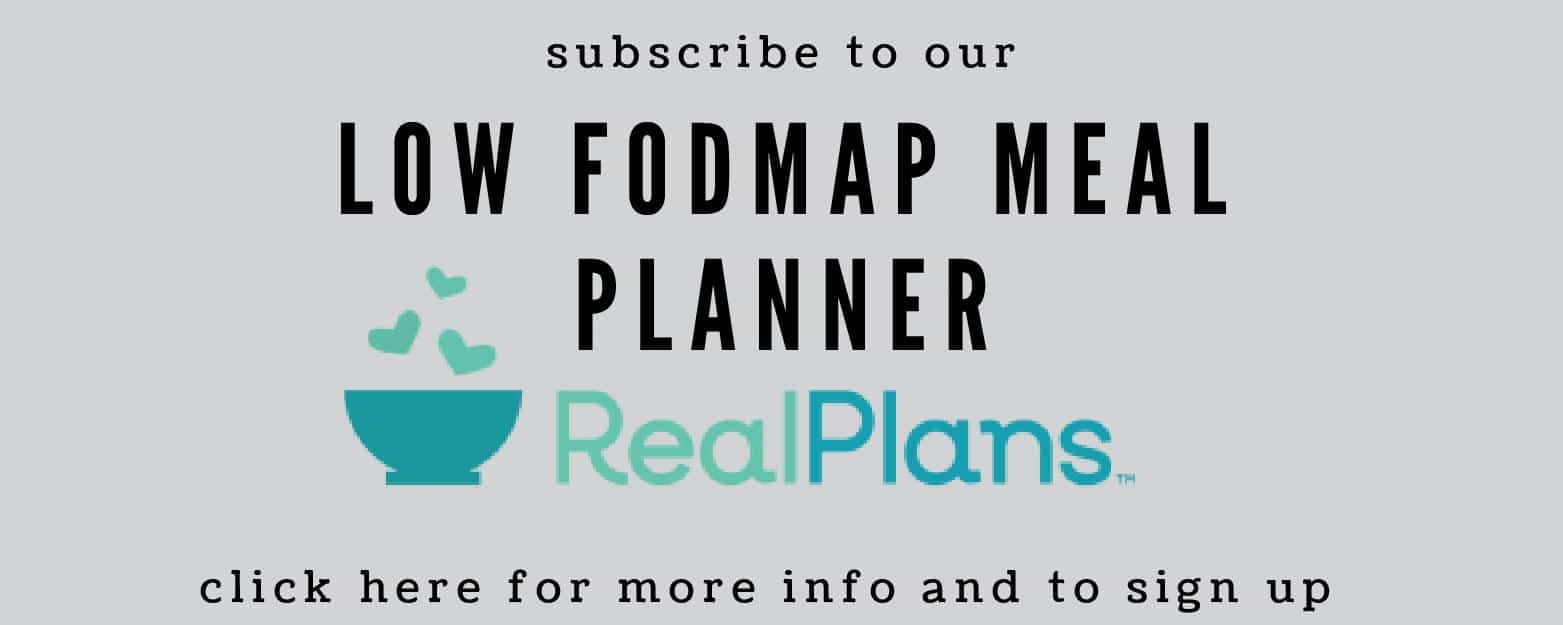Recall that little thrill of opening the mailbox? That flicker of hope for something—anything—other than a bill. It was a tangible connection to the outside world, a tiny, daily surprise waiting just for you. Well, that whole ritual has changed, hasn’t it?
The digital revolution didn’t just give us email and social media; it completely rewired how we communicate, shop, and live. And it left our mailboxes feeling a little… empty. This isn’t just a feeling; the numbers are staggering. At its peak in 2006, the U.S. Postal Service (USPS) delivered an almost unbelievable 213 billion pieces of mail, as per the Postal Regulatory Commission. By 2024, that number had been sliced nearly in half to just 112 billion pieces.
The real heartbreaker is First-Class Mail—the stuff of personal connection. It cratered from a peak of 103.7 billion pieces in 2001 to just 44.3 billion in 2024, as per the USPS. That’s a whopping 57% decrease. The main culprit is what the USPS itself calls “electronic diversion“—our mass migration to email, online banking, and social media. As Senator Bernie Sanders put it, “As a result of the digital age and the decline of first-class mail, there is no question that the Postal Service must change and develop a new business model.”
Here are 14 things that have slowly vanished from that little metal box at the end of the driveway.
Personal Letters

The personal letter is the biggest casualty in the decline of the mail. The category for this kind of mail, Single-Piece First-Class, has fallen off a cliff. Between 1995 and 2013 alone, its volume dropped by a staggering 61%. It’s a trend that’s only accelerating. This isn’t just about technology; it’s a profound shift in how we connect. Emails and texts are fast and efficient, but they lack the personal touch and intimacy of a handwritten letter. As actor and unexpected sociologist Keanu Reeves once said, “Letters are something from you. It’s a different kind of intention than writing an e-mail.” That “intention” is what we’ve lost.
And historians are getting worried. They argue that this shift is creating a black hole in the historical record. Letters, they say, revealed the “unburnished voice and more unbuttoned personality” of people, from Abraham Lincoln to our grandparents. Emails and texts are often deleted in an instant, taking our true thoughts and feelings with them. They lack the “revelatory intimacy” that a physical letter holds forever.
We’ve traded a durable, thoughtful medium for a transient, hasty one. Future generations will be inundated with our social media data, but may have almost no access to our inner lives, just as we once had for generations past.
Birthday Cards and Holiday Greetings

Yes, the traditional greeting card industry is facing headwinds. The market is projected to shrink from approximately $15.9 billion in 2022 to $13.6 billion by 2027, primarily due to the rise of digital alternatives. The e-card market, in contrast, is booming, expected to grow at a compound annual growth rate (CAGR) of 11.9% through 2033 because, let’s be honest, they’re convenient. Fiserv’s study indicates that 77% of users prefer e-cards for their instant delivery.
But here’s the crazy part: reports of the paper card’s death have been “greatly exaggerated.” The U.S. Chamber of Commerce reports that Americans still purchase a whopping 6.5 billion greeting cards annually, making the market a $7 billion industry. And who’s keeping it alive? Millennials. George White, the former president of the Greeting Card Association (GCA), puts it bluntly: “The millennial generation is now the largest buyers of greeting cards from a dollar standpoint… saved our industry.”
It’s a fascinating psychological loop. Since digital greetings have become the default, they often feel cheap and impersonal. The very technology that threatened the paper card has accidentally made it a premium item. Its scarcity gives it value. Sending a physical card is now a deliberate, thoughtful act that cuts through the “digital clutter,” which is why millennials, who crave authenticity, are willing to pay more for that tangible expression of care.
Postcards from a Friend’s Vacation

Finding a postcard with a glossy photo of the Eiffel Tower and a hastily scrawled “Wish you were here!” was like getting a mini-vacation in your mailbox. It was proof that someone, somewhere far away, was thinking of you. Today, that proof arrives instantly via an Instagram story. The personal postcard is a major casualty of our hyper-connected world. Globally, annual sales have plummeted by an incredible 75%, from over 20 million to just 5 million in a few decades. In the U.S., the number of stamped postcards—the kind you send to a friend—has been dropping by about 10% every single year, falling from 1 billion in 2013 to just 413 million in 2022.
The reason is painfully obvious. As one report dryly notes, “Many travelers are sharing their journey with selfies and tagged locations… Nowadays, travelers would often be back before the postcards even arrive.” But the postcard isn’t dead. It has just changed careers. While you’re not getting them from your friends, you’re definitely getting them from your local real estate agent. In 2022, a staggering 87% of the 3.23 billion postcards mailed in the U.S. were for business marketing. They have the highest response rate of any direct mail because they’re so easy to glance at.
So, the postcard has undergone a complete metamorphosis. It transformed from a medium of personal, emotional connection into a brutally efficient tool for commercial advertising. Its physical form survived, but its soul was sold to the highest bidder.
Your Paycheck

The paper paycheck is officially an endangered species. According to PayrollOrg’s 2024 Getting Paid in America survey, nearly 92% of Americans now get their wages via direct deposit. The paper check is a distant second, used by only 3.7% of workers. Another survey by the American Payroll Association (APA) from 2022 reported a higher direct deposit number, at 93%.
It’s a clear win-win. Employers save a fortune on paper, printing, and postage. And for employees, it’s all about speed and security. The money is in your account on payday morning, no trip to the bank required, and no risk of a lost or stolen check. That security is a huge deal. When asked how difficult it would be if a paycheck were delayed by just one week, 49.14% of people responded that it would be “very difficult.” Direct deposit provides a financial stability that paper checks just can’t guarantee.
This shift represents more than just a tech upgrade. It’s the de-physicalization of our reward for labor. The paycheck has become an invisible, automated transaction. We’ve gained efficiency but lost a tangible, psychological touchpoint. The word “paycheck” is now just a figure of speech, and the satisfying ritual that once came with it has vanished into the digital ether.
Monthly Bills

The monthly arrival of that dreaded stack of windowed envelopes was a familiar chore. Opening them was no fun, but it served as a clear, physical reminder of what needed to be paid and when. This is one area where paper is putting up a surprisingly tough fight. As of 2021, a majority of customers—62%—still received a paper bill, while only 35% got an e-bill.
Why are people so attached to paper bills? It’s not just about being “old-fashioned.” A paper bill doesn’t get buried under a mountain of spam. But of course, the tide is turning. E-bill use is growing by about 10% a year, primarily driven by millennials. But the slow adoption reveals a fascinating tension. For many, a paper bill isn’t just information; it’s a “to-do list” item. It sits on the counter, demanding attention in a way that an unread email simply can’t. It’s a rational response to the overwhelming “digital clutter” of modern life, showing that for paramount tasks with financial consequences, many of us still trust a physical object to keep us on track.
Bank Statements

This is one paper product that digital has almost completely wiped out. A recent survey found that an incredible 48% of people now use online banking every single day. Another 26% use it a few times a week. That leaves a tiny 6% who rarely or never bank online. With that kind of constant, real-time access, waiting for a monthly paper summary feels completely archaic.
This has fundamentally changed our relationship with our money. The paper statement made us passive observers of our past finances. We’d look back at what we spent last month. Online banking, however, has transformed us into active, daily managers of our current financial situation. We can track spending, move money, and deposit checks instantly.
So, the death of the paper bank statement isn’t just about saving trees. It marks the end of an era of passive financial review and the dawn of an age of hyper-aware, active financial self-management.
Mail-Order Catalogs

The arrival of the Sears “Wish Book” or the J.C. Penney catalog was a major household event. Kids and adults alike would spend hours flipping through the pages, circling toys, clothes, and gadgets. It was a physical portal to a world of consumer dreams. For a while, it looked like e-commerce had killed the catalog. The number of mailings in the U.S. peaked at a staggering 19.6 billion in 2007, then declined by more than 50% to 9.8 billion in 2016. After all, why flip through a book when you can just go to a website?
E-commerce is a juggernaut, now accounting for 56% of all retail sales growth in the U.S. in 2024. But then, a funny thing happened. The catalog came back. By 2018, the number of mailed catalogs had rebounded to 11.5 billion. The reason? “Digital Clutter.” We’re so bombarded with online ads that we’ve become accustomed to ignoring them. A physical catalog, however, offers a “recreational shopping experience.” It’s tangible and commands our attention. And it works.
The modern catalog is no longer a simple sales tool. It has evolved into a high-end marketing piece, a luxury good designed to create a brand experience that a fleeting digital ad never could. It’s not there for you to place an order from; it’s there to inspire you to go online and do it. It’s no longer a phone book of products; it’s a curated brand magazine.
Magazine Subscriptions

That feeling of pulling a fresh copy of TIME, Sports Illustrated, or Vogue from the mailbox was a weekly or monthly treat. The glossy pages, the unique smell of the ink—it was a ritual. That ritual is fading fast. Print circulation is in a nosedive. Press Gazette notes that across the top 50 U.S. magazines, print circulation dropped another 5% in the last half of 2024 alone.
Some of the declines are brutal: Reader’s Digest is down 22% year-over-year, National Geographic is down 18%, and Good Housekeeping has plummeted by a shocking 47%. The audience hasn’t disappeared; they’ve just moved online. One report projects the global digital magazine publishing market to reach $32.8 billion by 2033, according to DataHorizon Research. However, how people consume them has undergone a radical change.
“All you can read” services like Apple News+ now account for a massive 55% of all digital magazine circulation. For some magazines, these bundles make up nearly their entire digital readership. This has fundamentally devalued the idea of a single magazine. The magazine in your mailbox was a destination, a product you chose for its unique voice. The magazine on your tablet is now often just one stream of content among hundreds, with your loyalty belonging to the platform (like Apple) rather than the publisher. It’s a subtle but profound shift in how we consume media.
Netflix DVDs in Those Red Envelopes

For a glorious period in the 2000s, seeing that iconic red envelope in your mailbox was pure magic. A movie you’d been dying to see, delivered right to your door. It felt like living in the future. Netflix launched its DVD-by-mail service in 1998, a huge gamble given that most people still used VHS at the time. However, their subscription model, with no late fees, was a revolution. The company delivered its billionth DVD in 2007.
But even then, the company’s founder, Reed Hastings, knew DVDs were just a stepping stone. His real goal was constantly streaming. When internet speeds finally caught up, Netflix launched its streaming service in 2007. Initially, it was a modest addition, featuring only 1,000 movies compared to the 70,000 available on DVD. We all know what happened next. Streaming exploded. There are now 1.8 billion video streaming subscriptions worldwide. The DVD service, once the core of the business, became a relic. Subscribers dwindled from a peak of around 13 million in 2010 to an estimated 1 million when Netflix finally mailed its last red envelope in 2023.
The story of Netflix’s DVD service is the ultimate example of a company deliberately making its product obsolete to catch the next wave. The red envelope wasn’t just a product; it was a Trojan horse. It got Netflix into millions of American homes, and once inside, it unleashed the digital revolution that made the envelope itself unnecessary. Its disappearance from our mailboxes is a monument to one of the most successful and ruthless business pivots in history.
Film Developing Mailers

The anticipation was part of the fun. You’d finish a roll of 35mm film, pop it into a prepaid mailer, send it off to a lab, and then wait. Weeks later, your developed photos would arrive, a tangible collection of memories you’d almost forgotten capturing. This mail-in service is as old as photography itself. Kodak was encouraging people to mail in their film for developing as far back as the early 1900s. For decades, it was the standard way for amateurs to get their pictures printed.
Then came the digital camera, and the entire industry was annihilated almost overnight. The one-hour photo labs that were on every corner are now ghosts. Major retailers like Costco, Walmart, and CVS have either stopped developing film entirely or outsource the rare roll they receive to a specialty lab.
Mail-in processing still exists, but it has undergone a complete transformation. It’s no longer a mass-market convenience. It’s a niche, artisanal service for a dedicated subculture of analog photography enthusiasts. Labs with names like The Darkroom and Indie Film Lab now cater to artists and hobbyists who want high-quality, professional scans, not the cheap prints a drugstore once offered. So, the film mailer has gone from a common household item to a symbol of a craft. Its journey reflects a shift from mass convenience to a specialized, high-end service for a passionate few.
Party Invitations

Getting a thick, cardstock invitation in the mail signaled something important. A wedding, a 50th anniversary, a formal event. It was an invitation you stuck on the fridge, a physical marker of a significant future date. While paper is still the standard for huge life events like weddings, the vast majority of our social lives are now organized digitally. Data Insights Market reports that the electronic invitation software market is expected to grow rapidly, projected to increase from $2 billion in 2025 to $6 billion by 2033. Platforms like Evite, Partiful, and Paperless Post are now the default for everything else.
Evite alone has over 120 million users and sends more than 6 million invitations a year. The decline of the paper invitation has given rise to a new social language. A paper invite now signals a high-stakes, formal event. A digital invite signals something more casual. This has led to a bizarre new phenomenon: “invite creep.” Because digital invites are so easy to send, hosts now blast them out months in advance to lock down a date on our crowded social calendars. One event app reported a 20% increase in the lead time for parties. So, the paper invite’s absence has left us with a new social arms race, forcing us to RSVP to a casual birthday party before we’ve even bought a new calendar.
Sweepstakes Entries

“You May Already Be a Winner!” Those iconic Publishers Clearing House mailers were a staple of American mailboxes for decades. The peel-off stickers, the official-looking documents—it was a national lottery you could play with the price of a stamp. Those mail-in sweepstakes are now essentially a thing of the past. Many of them were less about giving away prizes and more about harvesting your data for “sucker lists” that were then sold to other marketers. Some companies even made the mail-in rules intentionally confusing—constantly changing the required envelope or card size—to discourage entries.
The modern sweepstakes is a digital-first affair. Online contests are a cheap and powerful way for brands to boost engagement and build their fan base. According to one study, brands that run online contests see an average of 34% growth in new followers per campaign.
The whole game has changed. The old sweepstakes was a blunt tool for gathering basic names and addresses. The new online contest is a precision instrument for data harvesting. You’re not just giving them your address; you’re giving them your email, your social media handle, and your consumer preferences. The prize for the company isn’t the chance that you’ll buy their product later; the prize is your data.
Chain Letters

Do you recollect the thrill and the low-grade terror of getting a chain letter? A poorly photocopied note promising you immense wealth or good luck if you just sent it to ten friends, and threatening you with vague but terrifying consequences if you “broke the chain.” These letters have been around forever. One of the first known examples dates back to 1888, when a missionary school used one to solicit donations of dimes. Their power has always been in exploiting introductory human psychology: our desire for a lucky break and our deep-seated fear of misfortune.
The physical chain letter is now completely extinct. But its spirit is more alive than ever. It has simply mutated and found a more efficient host: the internet. It’s now the viral email, the “share this or you’ll have 7 years of bad luck” Facebook post, the frantic WhatsApp forward. The “ease of transmission” of digital technology has made the chain letter’s modern form faster and more widespread than its creators could have ever dreamed.
The physical chain letter had natural barriers. It took time, effort, and money, including the cost of stamps and envelopes. The digital version has zero friction. It’s a perfect example of how a medium’s characteristics define the social phenomena it creates. The mail kept the chain letter contained; the internet let it run wild.
(Most) Junk Mail

The daily ritual of sorting mail over the recycling bin, tossing out a flurry of credit card offers, local pizza ads, and unsolicited flyers has lessened. But has it really gone away? Yes and no. Marketing Mail is still a massive business for the USPS, with 57.5 billion pieces delivered in 2024. But that’s way down from its peak of 99 billion pieces in 2008. So, yes, you are getting less physical junk mail.
That’s because the real “junk mail” of our era has moved online. It’s called spam. In 2023, an almost unbelievable 45.6% of all email traffic on the entire planet was spam. The U.S. is the world leader in spam, sending out approximately 8.61 billion spam emails daily.
But here’s the great paradox: as our inboxes have become overwhelmed, the physical mailbox has become more valuable to marketers. Research indicates that direct mail has a response rate of up to 9%, whereas email has a response rate of only 1%. This means that direct mail is 5 to 9 times more effective at eliciting a response from recipients. People trust it more, too. A stunning 82% of consumers trust print marketing more than digital ads.
We haven’t gotten rid of junk mail; we’ve just changed its address. Most of it now lives in our spam folders. This has created a unique opportunity for marketers to utilize the now-quieter physical mailbox as a premium channel to cut through the digital noise, transforming old-fashioned “junk mail” into something surprisingly effective.
Key Takeaway

So there you have it. We’ve seen how everything from our paychecks to our party invites has migrated from the mailbox to the modem. The data paints a crystal-clear picture of a world that has traded the tangible for the instantaneous. And that’s the core trade-off, isn’t it? We’ve gained incredible speed and efficiency, but we’ve lost a particular kind of physical connection and personal intention.
However, as we succumb to digital fatigue, something fascinating is unfolding. The physical is gaining new power. Neuromarketing studies show that physical media, such as direct mail, requires 21% less cognitive effort to process than digital media, making it far more memorable. Holding something in your hand activates parts of the brain associated with value and desire in a way that looking at a screen doesn’t. As writer Liz P. notes, to connect with people, you have to “write the way your customers speak,” and sometimes, the most powerful way to speak is with something they can actually touch.
The future of the mailbox may not be about volume, but about value. As our lives become more virtual, the rare, tangible object that arrives by post—a thoughtfully chosen card, a beautiful catalog, a package from a loved one—carries more emotional weight than ever. The mail carrier may not be as busy as they once were, but the things they do deliver have never mattered more.
Disclaimer – This list is solely the author’s opinion based on research and publicly available information. It is not intended to be professional advice.
How Total Beginners Are Building Wealth Fast in 2025—No Experience Needed

How Total Beginners Are Building Wealth Fast in 2025
I used to think investing was something you did after you were already rich. Like, you needed $10,000 in a suit pocket and a guy named Chad at some fancy firm who knew how to “diversify your portfolio.” Meanwhile, I was just trying to figure out how to stretch $43 to payday.
But a lot has changed. And fast. In 2025, building wealth doesn’t require a finance degree—or even a lot of money. The tools are simpler. The entry points are lower. And believe it or not, total beginners are stacking wins just by starting small and staying consistent.
Click here and let’s break down how.





